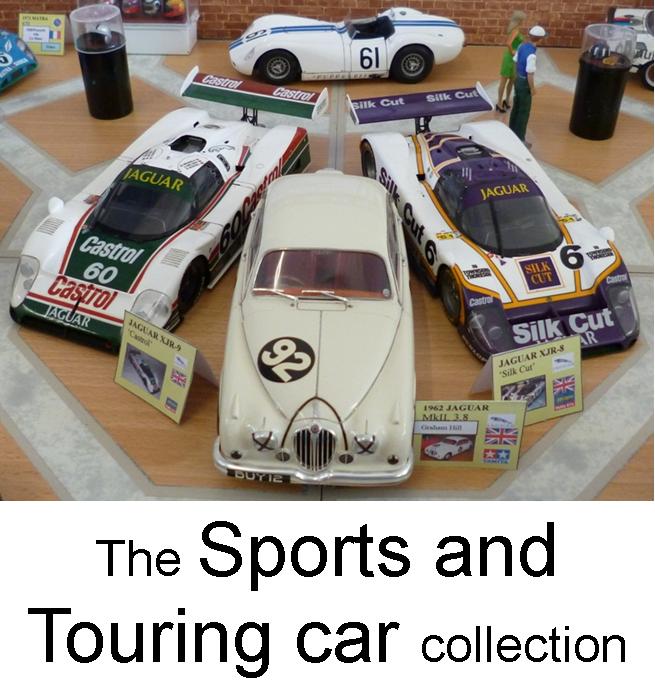In 1958 Eric Broadley, and his cousin Graham Broadley, built a sports-racer of tubular steel space frame construction with a Coventry Climax engine. It proved to be quick and in 1959 was a serious rival to the previously unbeatable Lotus 11. When Eric crashed at Goodwood and had a stay in hospital he refocused his career on the designing of cars and LOLA would go onto be a world leader in race car technology for decades thereafter.
Introduced in 1965 the T70 was similar to the GT40 (but without a roof), because the GT40 owed much of it’s design to Broadley’s 1962 LOLA MK6 GT sports coupe. Careful ‘weight engineering' meant that the T70 spyder was lighter that the Ford GT40 and, when mated to the Traco Engineering built 5.9-litre V8 Chevrolet engine, and Hewland’s brand new LG 500 gearbox, it was faster than any contemporary F1 car. John Surtees had the first car and his team was effectively the ‘works’ team for the next few years and Surtees himself scored the T70’s first win at the 1965 Mosport Players 200 Can Am race.
In 1966 the T70 would win 5 out of 6 Can am races and orders flew in. But Eric remained dissatisfied, he felt the car was too heavy and set about refining the chassis. The MKII had more aluminium in it’s construction and the panels were riveted on rather than welded to save yet more weight. Further development work in a wind tunnel, under the supervision of Tony Southgate, saw a new version appear; with a roof. T70 MKIII had better aerodynamics than the GT40 but further race development was hampered by lack of funds. Lola could never afford to enter a ‘works’ team and in the endurance events the cars failed all too often. When Mark Donohue and Chuck Parsons drove a Mk 3B to victory for Penske Racing in the 1969 Daytona 24-hour things seemed to be looking up, but it proved to be a famous exception rather than a rule.
Several things combined against top line success for the T70 although it was undoubtedly a great racing car. 1st was the reliability problems suffered when the Chevrolet engines were forced to run on ‘pump fuel’ in Europe, this had a lower octane rating than the ‘Avgas’ used in the States. Then in 1968 the engine size for prototypes was reduced to 3ltr, unless more than 50 cars had been built in which case the engine size could be up to 5ltrs. Thirdly the minimum number for homologation was lowered to 25 which allowed the more modern Porsche 917 and Ferrari 512 designs to compete directly against the Lola and the aging GT40. Despite this the T70 proved to be one of the most successful of Broadley’s designs winning races under a variety of regulations and across all types of circuits.
Our Lola T70 Mk.3B GT Chevrolet is the #32 car Jo Bonnier won the 1969 GP de Paris with. He completed the 20 laps in a time of 31:05.800 covering 67.400 kms, and set fastest lap with a time of 1:30.1, his average speed was 134.251kph. The only other car to complete the 20 laps was the 2nd place Ford GT40 of Michael Martin.

1/24th scale kit.
built by Ian.
This model was built straight from the box, more or less; the bullet wing mirrors were purchased way back in the 1990's from Marshall Auto's. The fit of the parts is great and the cleaning up not excessive. Resin kits are often problematic, especially small run cottage industry style products like this, but not this kit. The manufacturer, who made all the masters from scratch, has been thorough in his engineering ensuring the kit is straight forward but satisfying to build. It has the right level of detail for a curbside kit without compromising detail for simplicity of build, or vice versa. The second kit from 'Roaring Replicars' we very much look forward to more.
Ian used Halfords white primer followed by several coats of Golden Yellow from the Americana range. Johnsons Klear gave just the right level of shine for the top gloss coat. Most of the decals came from the spares box but the Bongrip and 'P' logos came from a set by 'Fein-design-modell'. Oh, and the #32 on the front is meant to be rather 'off set'?!
RETURN TO :-
